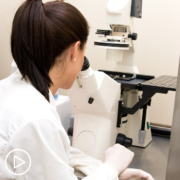What Are the Long-Term Effects of JAK Inhibitors?
What Are the Long-Term Effects of JAK Inhibitors? from Patient Empowerment Network on Vimeo.
MPN expert Dr. Gabriela Hobbs discusses what researchers know about the long-term safety of JAK inhibitors and options for patients if the treatment loses effectiveness over time.
Dr. Gabriela Hobbs is a hematology-oncology physician specializing in the care of patients with myeloproliferative neoplasms (MPN), chronic myeloid leukemia, and leukemia. Dr. Hobbs serves as clinical director of the adult leukemia service at Massachusetts General Hospital. Learn more about Dr. Hobbs.
See More From MPN Clinical Trials 201
Related Programs:

|

|

|
Transcript:
Katherine:
What are the long-term effects of JAK inhibitors? And what happens when JAK inhibitors are no longer effective?
Dr. Hobbs:
Yeah. Great question. So, so far the patients that have been on JAK inhibitors for a long time don’t seem to have the development of additional toxicities that we didn’t know about.
So, I’ll just comment on some of the things that we do know about. Weight gain is a common complaint that I have from patients, especially those that have polycythemia vera, because maybe they didn’t want to gain weight when they were put on a JAK inhibitor compared to the myelofibrosis patients who maybe had lost a lot of weight before being on a JAK inhibitor.
There are certainly higher risk probably of developing infections with some of the JAK inhibitors. And we see, for example, shingles reactivation being a common one. And there’s the concern of development of skin cancers, which has been seen with some JAK inhibitors. But generally speaking, long-term use seems to be safe. That being said, ruxolitinib (Jakafi), which is the oldest one to be approved, has only been around since 2011, so we don’t have decades worth of experience to know.
When JAK inhibitors stop working – to answer the second part of your question – until fairly recently we really didn’t have a whole lot to offer because there was only one JAK inhibitor. Now we have two others. We have fedratinib (Inrebic) and also pacritinib (Vonjo). And we know from the studies that have been done with both of these agents that some patients that lose response to Jakafi, meaning that their spleen starts to grow or their symptoms start to come back, can be treated with these other JAK inhibitors.
And many patients will, again, have control of their spleen and symptoms. Now losing response to a JAK inhibitor can come in many different ways. And so, some patients may also develop signs of having leukemia or progression of their disease to leukemia. And, unfortunately, for those patients, being on another JAK inhibitor doesn’t make sense. So, those patients may need to receive other types of medications or a stem cell transplant.






























